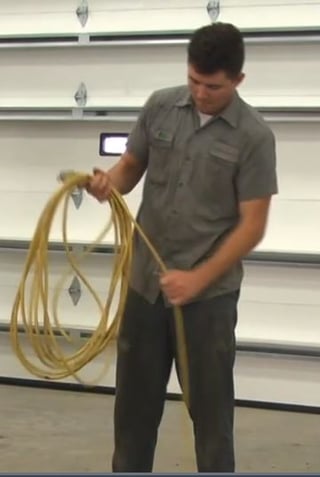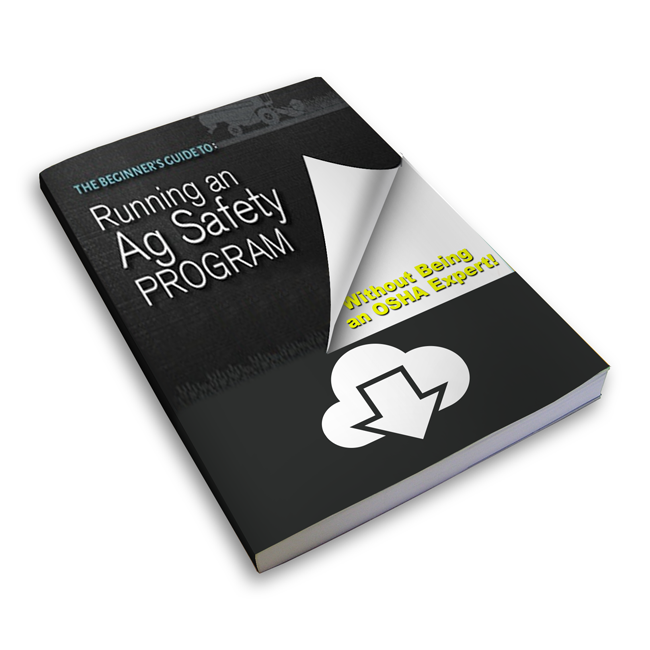Slip, trip and fall (STF) injuries are common in agribusiness, especially in the winter time. Prepare now to minimize slip, trip and fall hazards around your facilities and before the ice and snow arrive. Grab a clipboard and pad and make a list of the top 3-5 most obvious areas that have given employees problems in the past. Then get feedback from employees where they feel STF hazards are around the operation. Next do a walk around to find areas that are potential walking and working surface hazards. This should include areas where there is clutter, reduced or blocked exits, uneven surfaces and areas where water, ice or snow can accumulate.

Water, Ice and Snow Management
Develop a plan to address winter hazards associated with ice and snow. Look for areas where water and ice can accumulate in walkways and parking lots. Consider additional grading or channel water to keep walkways dry or clear. Evaluate high-risk areas, high traffic areas, areas with slopes and areas where employees will be carrying objects to avoid slips, trips and falls.
Have a snow and ice removal plan and communicate to employees who are responsible. Inventory supplies to ensure equipment and materials are on hand to address removal. Also keep supplies located in convenient locations where they will be needed. When stockpiling snow, be careful not to block or reduce visibility around corners and accessing roadways. Be aware of refreezing. Melting snow piles adjacent to a walkway can result in refreezing of water on the walkway. Also see Good Day's Work blog: Winter Hazards of Snow and Ice
Tripping Hazards
During winter months, clutter can build up in storage areas, work areas, hallways and walkways potentially leading to slips, trips and falls incidents. There’s no substitute for good housekeeping. Workplaces must be kept clean, orderly and sanitary. Floors must be maintained as clean and dry as possible. Oils, grease, powders and liquids should be cleaned up. Mark permanent aisles and passageways as needed. Avoid running power cords and hoses across aisles where people walk. Look for uneven flooring that can be potential trip hazards such as cracked concrete and changes in floor elevations from one surface to the next.
Adequate Lighting
Identify pathways where employees walk and determine if there is adequate lighting. Check lighting inside and outside of buildings as well as parking lots. Replace lighting as needed. Inadequate lighting is a common source of STFs.
Heaters
 We use space heaters around the office, shop, outbuildings and barns. Space heaters need space, so keep the areas around them clean and away from combustibles. Block heaters, tank heaters and heat tape need grounded circuits as well as any extension cords suppling power. Also, keep cords away from animals’ reach to avoid them from walking, standing or chewing on them. Extension cords should be heavy enough to carry the load. Use ground fault circuit interrupters (GFCI) around water or anything that is wet. Keep electrical cords and extension cords for heaters out of walkways.
We use space heaters around the office, shop, outbuildings and barns. Space heaters need space, so keep the areas around them clean and away from combustibles. Block heaters, tank heaters and heat tape need grounded circuits as well as any extension cords suppling power. Also, keep cords away from animals’ reach to avoid them from walking, standing or chewing on them. Extension cords should be heavy enough to carry the load. Use ground fault circuit interrupters (GFCI) around water or anything that is wet. Keep electrical cords and extension cords for heaters out of walkways.
Summary
There is no substitute for good housekeeping around the business. Though slips, trips and fall hazards are present year-round, there is an increased potential for them in the winter months due to ice and snow. As the business manager or safety director, you must make a reasonable effort to reduce the potential for injury to employees, guests or patrons. Gather input from employees, make your evaluations, prioritize the list and put a STF plan into action. Involve your employees and allow them to be a part of the solution(s). Go after the low hanging fruit such as high traffic areas, slopes, areas where employees carry objects, dimly lit walkways, areas of clutter and where water, ice and snow will create a hazard. Addressing these hazards before winter sets in can help reduce injuries, especially to employees, avoiding lost time and medical claims. Implementing a STF plan can help assure everyone Gets Home Safe.
For more information on winter weather workplace hazards, see OSHA’s Winter Weather website:



